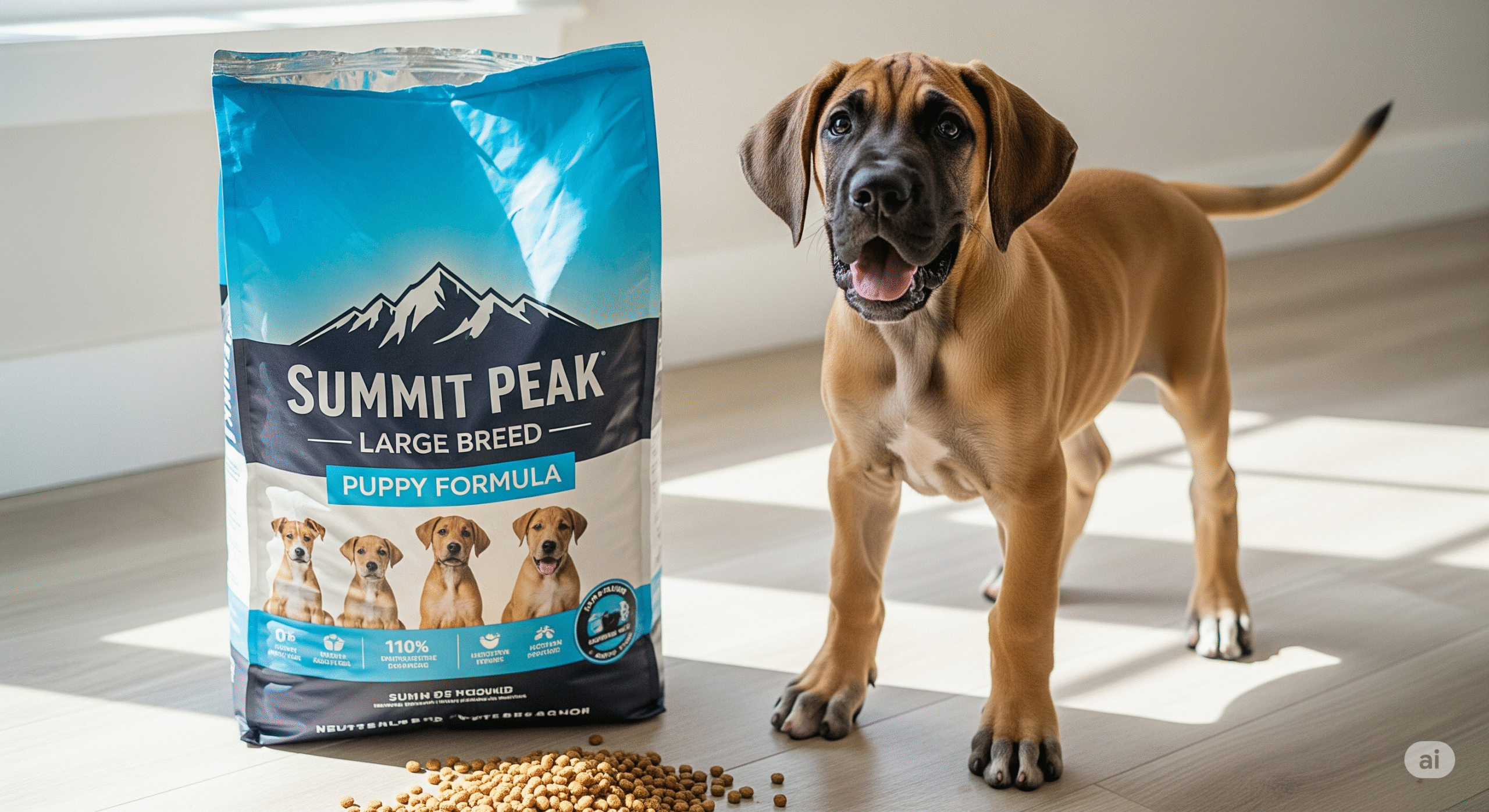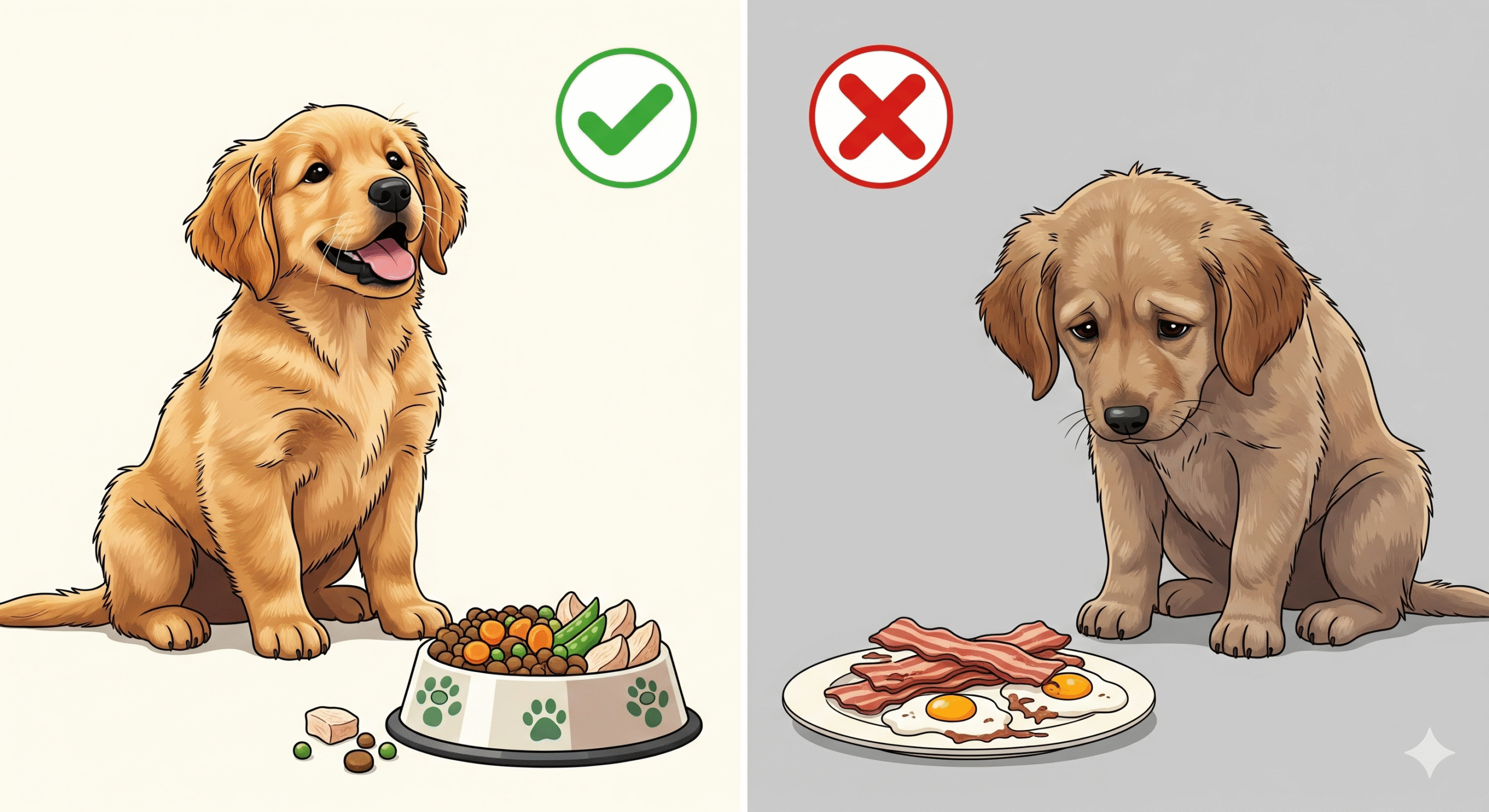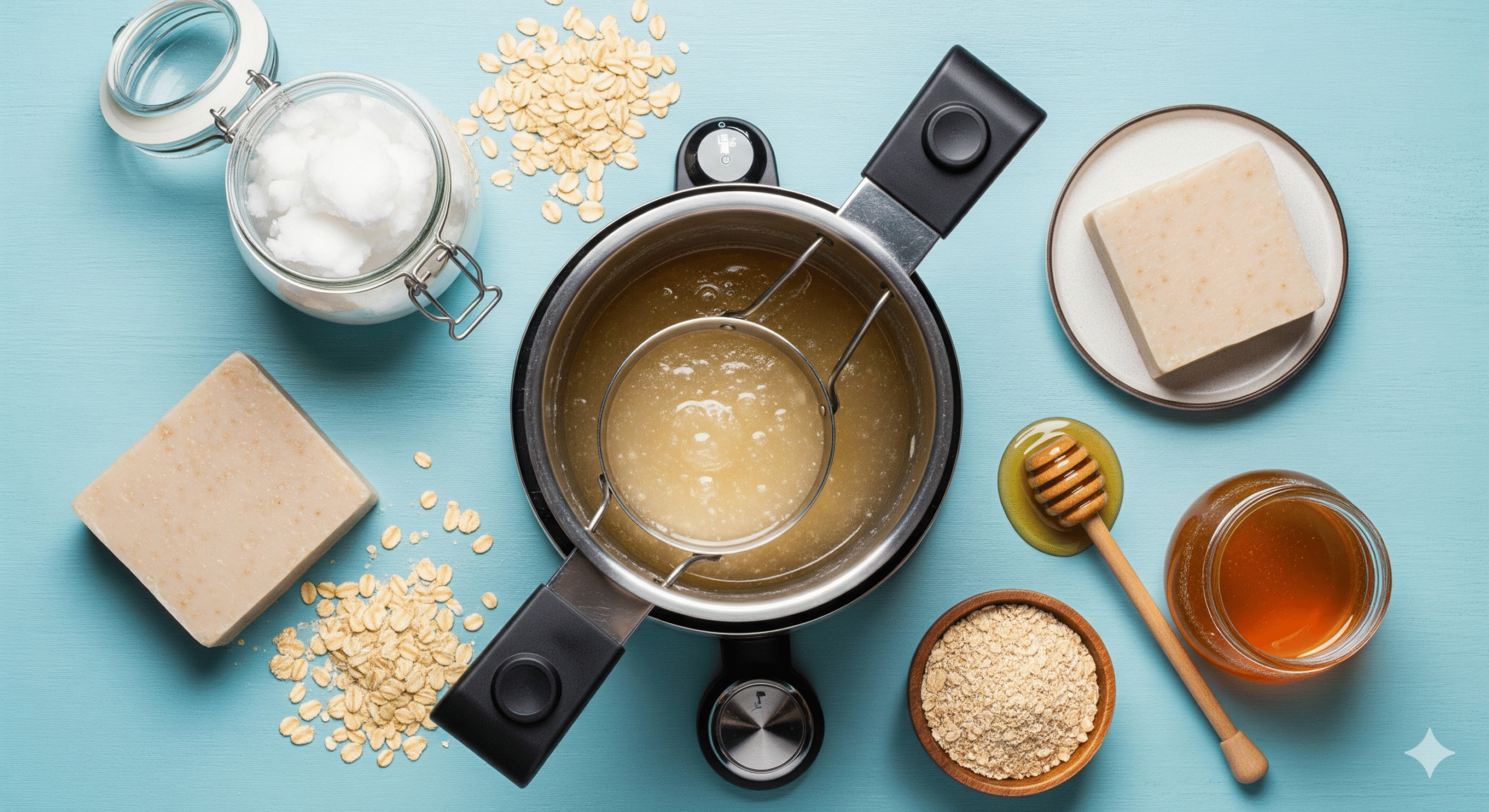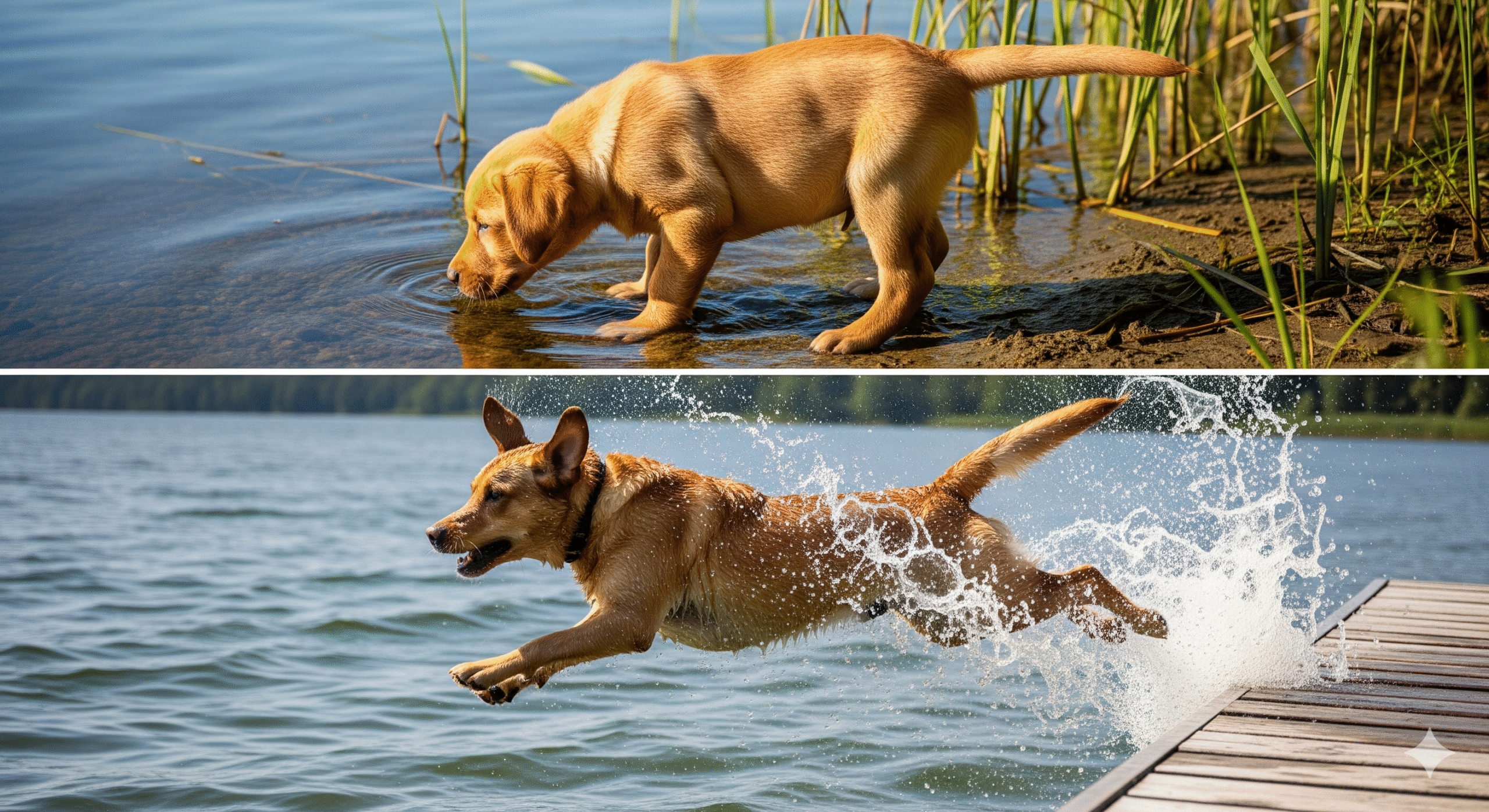Choosing the right food for your large breed puppy isn’t just about nutrition—it’s about setting a foundation for a long, healthy life. Giant and large breed puppies have unique dietary needs that, if ignored, can predispose them to devastating joint disorders and growth problems. With countless bags on the shelf all claiming to be the “best,” how do you choose?
This definitive guide, curated with veterinary insight, will help you navigate the world of large breed puppy nutrition. We’ll cover:
✔️ Why large breed nutrition is different (it’s critical!)
✔️ Key ingredients to look for (and red flags to avoid)
✔️ Detailed reviews of our top 5 vet-approved picks for 2024
✔️ How much and how often to feed for optimal growth
Let’s find the perfect fuel for your gentle giant’s journey.
Why Large Breed Puppies Need Special Food 🦴
Large breed puppies (expected adult weight >50 lbs) don’t just need more food; they need a specific balance of nutrients to control their rapid growth.
The #1 Concern: Controlled Growth for Healthy Joints
Large breed pups grow incredibly fast. This rapid growth can stress developing joints, leading to orthopedic conditions like:
- Hip Dysplasia: A malformation of the hip joint.
- Elbow Dysplasia: A similar issue in the elbow joint.
- Osteochondritis Dissecans (OCD): A defect in the smooth cartilage covering the bones.
Specialized large breed puppy food is formulated to:
- Have Lower Calories: Prevents excessive weight gain that stresses joints.
- Have a Specific Calcium:Phosphorus Ratio: Typically 0.8:1 to 1.3:1. Too much calcium can disrupt bone development.
- Include Joint-Supporting Nutrients: Glucosamine, Chondroitin, and Omega-3 fatty acids are often added.
What to Look For: Decoding the Ingredient Label 🔍
Navigating the ingredient list and guaranteed analysis is your superpower.
Green Flags: What to Look For ✅
- Named Animal Protein First: Look for “deboned chicken,” “salmon,” or “lamb” as the first ingredient. This indicates a high-quality protein source.
- “Large Breed Puppy” Designation: This label means the food is formulated to meet AAFCO nutrient profiles for growth of large breed puppies.
- Whole Grains or Healthy Carbs: Like brown rice, oatmeal, or barley for steady energy.
- Natural Preservatives: Such as mixed tocopherols (Vitamin E).
- Omega-3 Fatty Acids: From sources like fish oil or flaxseed for brain development and reducing inflammation.
- Glucosamine & Chondroitin: Added for joint health support.
Red Flags: What to Avoid ❌
- Vague Meat Meals: “Meat meal” or “poultry meal” can be from questionable sources. “Chicken meal” is fine.
- Excessive Fillers: Corn, wheat, and soy are common allergens and offer less nutritional value.
- Artificial Additives: Colors (Blue 2, Red 40), flavors, or preservatives (BHA, BHT, ethoxyquin).
- Calcium Content Over 1.5%: This is a major red flag for large breeds.
2024’s Top 5 Vet-Recommended Large Breed Puppy Foods 🏆
Based on nutritional adequacy, ingredient quality, and clinical results, here are our top picks.
1. Royal Canin Large Breed Puppy 🥇
- Best For: Breed-Specific Precision & Joint Health
- Key Features: Formulated with an exact balance of calcium and phosphorus for controlled bone growth. Includes antioxidants like Vitamin E and taurine for heart health, and highly digestible proteins.
- Why Vets Love It: This is often the “gold standard” recommended in veterinary clinics because of its scientific, precise formulation and proven track record.
- Considerations: It contains corn and chicken by-product meal, which some owners prefer to avoid, though these are not inherently bad ingredients.
2. Hill’s Science Diet Large Breed Puppy 🥈
- Best For: Overall Balanced Nutrition & Immune Support
- Key Features: Uses high-quality chicken meal as the first ingredient. Includes DHA from fish oil for brain development and a proprietary blend of antioxidants for a robust immune system.
- Why Vets Love It: Hill’s has a strong commitment to clinical research and food safety. It’s a trusted, well-rounded choice for supporting healthy growth without excess calories.
- Considerations: Like Royal Canin, it contains grains (wheat, corn) which are fine for most dogs but not ideal for those with specific grain allergies.
3. Purina Pro Plan Large Breed Puppy (Sport Formula) 🥉
- Best For: Active & Sporting Breed Puppies
- Key Features: Real chicken is the first ingredient. This formula is packed with protein (28%) to support muscle development in active pups and includes glucosamine for joints and live probiotics for digestive health.
- Why Vets Love It: The inclusion of probiotics is a huge plus for maintaining gut health during dietary transitions. The high protein level is ideal for puppies who will be working or highly active dogs.
- Considerations: The high protein content might be too rich for more sedentary puppies.
4. Wellness Complete Health Large Breed Puppy
- Best For: Owners Seeking Natural Ingredients
- Key Features: Deboned chicken, salmon meal, and oatmeal are primary ingredients. It’s free from corn, soy, and artificial additives. Includes DHA, glucosamine, and chondroitin.
- Why Vets Love It: It offers a high-quality, “clean” ingredient list without compromising on the specific nutritional needs of large breeds. It’s an excellent grain-inclusive option for discerning owners.
- Considerations: It is typically more expensive than the big-name veterinary brands.
5. Blue Buffalo Wilderness Large Breed Puppy (Grain-Free)
- Best For: Grain-Free Preference (Use with Caution)
- Key Features: High-protein, grain-free formula with deboned chicken as the first ingredient. Includes LifeSource Bits—a blend of antioxidants, vitamins, and minerals.
- Why It’s Listed: We include it because some owners seek grain-free options, but it comes with a major caveat.
- ⚠️ Major Consideration: The FDA has investigated a potential link between grain-free diets (often high in legumes like peas and lentils) and Dilated Cardiomyopathy (DCM) in dogs. Consult your veterinarian before choosing a grain-free diet. This should not be a first-choice option without medical reason.
How to Feed Your Large Breed Puppy: A Practical Guide 📊
How Much & How Often?
- Follow the Bag’s Guide: Start with the feeding chart on your puppy food’s packaging, which is based on their current weight and projected adult weight.
- Use a Measuring Cup: Never free-feed. Precisely measure each meal to prevent overfeeding.
- Meal Frequency:
- 8-12 weeks: 4 meals per day
- 3-6 months: 3 meals per day
- 6+ months: 2 meals per day
Monitoring Your Puppy’s Weight
You should be able to easily feel your puppy’s ribs under a thin layer of fat. You should also see a visible waist when looking down at them. If you can’t, you’re likely overfeeding.
The Final Word: Partner With Your Vet 🩺
While this guide is a powerful starting point, your veterinarian is your best resource. They know your puppy’s specific health history and can make the most personalized recommendation.
Ready to choose the best start for your large breed pup?
Training your new puppy is incredibly important, but so is providing them with the right nutrition, especially if they show signs of digestive discomfort. If your pup seems gassy or has loose stools, you should read our guide on Top 5 Puppy Foods for Sensitive Stomachs . Getting their diet right from the start can prevent health issues and make potty training much easier.






